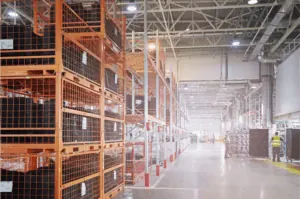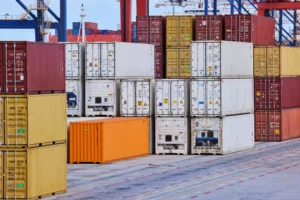The Internet of Things (IoT) is becoming more and more commonplace in society and is beginning to have a major impact on companies and the economy. One of the most important areas that IoT is beginning to change is supply chain management.
Especially in today's world, we can clearly see that a good supply chain management system is the key to the long-term success of any company. Companies that use IoT in the supply chain can have a significant competitive advantage over those that do not.
How the Internet of Things helps optimize the supply chain
Supply chains are becoming increasingly complex as more and more players are involved in the process. This complexity makes it difficult to get a clear picture of what is happening at any given time. The Internet of Things (IoT) can help solve this problem by providing real-time visibility across all assets and processes in the supply chain.
This information can be used to ensure that bottlenecks are avoided and the supply chain runs smoothly. In addition, the IoT can also help to improve traceability so that companies can see exactly where their products are at any given time.

Examples of IoT in the supply chain
There are many different ways in which IoT can be used to improve supply chain management. Here are just a few examples:
- Networked devices can be used to track inventory levels and automatically reorder when they run low.
- GPS tracking makes it possible to track the location of shipments in real time.
IoT is still in its infancy, but is already having a major impact on supply chains. Further transformative changes can be expected in this area as the technology continues to develop.
Why are efficiency and reliability important within the supply chain?
Efficiency is important because it helps reduce costs and improve profitability. Reliability is important because it helps ensure that products are delivered on time and meet customer expectations.
The Internet of Things can help improve both efficiency and reliability by providing real-time insight into all aspects of the supply chain. This information can be used to identify bottlenecks and take action to prevent them. In addition, IoT can help companies track their products to ensure they are delivered on time.
The benefits of IoT for supply chain management are only just being recognized. As the technology continues to develop, we can expect even more transformative changes in this area.
How IoT can help in the supply chain
Companies that use IoT technologies in their logistics see major benefits. The Internet of Things can help companies track inventory, assets and shipments in real time. This allows companies to react quickly to delays or bottlenecks. IoT also enables companies to anticipate delays so that customers are not surprised.
Advantages of using IoT in the supply chain
Overall, the use of IoT in the supply chain offers many advantages:
- Increased transparency in the supply chain
- Improved traceability during transport
- Faster response time in the event of infrastructure disruptions
- Reduced inventories through intelligent methods
- Increased supplier efficiency and reliability
- Reduction of downtime
- Higher customer satisfaction
- Long-term savings potential
Difficulties in the logistics of companies without IoT technologies
For companies without IoT technologies, supply chain transparency and traceability can be a challenge. The reason for this is that these companies are often reliant on manual processes and paper-based documentation.
Walmart as an example
One example of a company that has missed the switch to modern IoT technologies in its logistics is Walmart. The company is struggling to keep up with Amazon's fast delivery times. Amazon has managed to do this by using a variety of technologies, including IoT in its supply chain and logistics. This allows the company to track packages and stock levels in real time. Walmart is trying to catch up by investing in similar technologies.

The future of IoT and the supply chain
In the future, more companies will use IoT technologies to improve their efficiency and reliability. In addition, more and more companies will use IoT to track inventory and deliveries in real time. Ultimately, these changes will lead to higher customer satisfaction and lower costs.
Conclusion
And as always in nature, there will be a battle for leadership and the title of "first mover" in the field of IoT logistics. The company that manages to successfully implement these technologies will have a significant competitive advantage.
To be successful, companies need to start investing in IoT technologies now. They need to experiment with different solutions to find out what works best for their business. Those that fail to make the transition to IoT-based logistics are likely to be left behind.
Frequently asked questions
What is supply chain optimization?
Supply chain optimization is about improving the supply chain to make it more efficient. This can be, for example, reducing inventory, improving delivery times or facilitating shipment tracking. The goal of optimization is to make the supply chain as efficient as possible to minimize costs and maximize customer satisfaction.
What makes a good supply chain?
A good supply chain should be able to respond quickly to disruptions and have a high level of transparency. This means that the supply chain quickly identifies and responds to any issues that arise. In addition, the supply chain should also be able to track inventory and shipments in real time. This enables companies to quickly identify and resolve disruptions.





